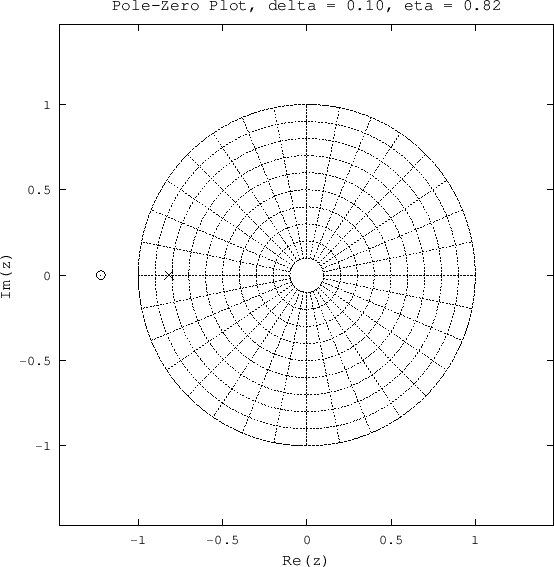Next |
Prev |
Up |
Top
|
Index |
JOS Index |
JOS Pubs |
JOS Home |
Search
The second method is based on constructing a partial fraction expansion of
the admittance directly:
with  as above. While such a construction is not guaranteed to be
positive real, (see [25] for a construction that
is),
we now have direct control over
the bandwidths and modal gains (pole residues in the admittance). The
reason the construction tends to be positive real is that by using
the same phase for each section (the 1 in all the section numerators), we
are sure to get a zero forming at some frequency near the middle between
the resonance frequencies, and at a similar distance from the unit circle.
This means we are constructing interlacing poles and zeros by simply adding
the resonators in parallel. The extra zero near dc is to ensure that
the admittance looks like a lightly damped spring at zero frequency. Since
half the sampling rate merely ``cuts off'' the frequency response, there is
no corresponding requirement to add a pole near
as above. While such a construction is not guaranteed to be
positive real, (see [25] for a construction that
is),
we now have direct control over
the bandwidths and modal gains (pole residues in the admittance). The
reason the construction tends to be positive real is that by using
the same phase for each section (the 1 in all the section numerators), we
are sure to get a zero forming at some frequency near the middle between
the resonance frequencies, and at a similar distance from the unit circle.
This means we are constructing interlacing poles and zeros by simply adding
the resonators in parallel. The extra zero near dc is to ensure that
the admittance looks like a lightly damped spring at zero frequency. Since
half the sampling rate merely ``cuts off'' the frequency response, there is
no corresponding requirement to add a pole near  as if it were the
point at infinity. However, the phase should be checked not to exceed plus
or minus
as if it were the
point at infinity. However, the phase should be checked not to exceed plus
or minus  degrees there (or at any other frequency), and a pole or zero
added if necessary to pull it into the positive-real range.
degrees there (or at any other frequency), and a pole or zero
added if necessary to pull it into the positive-real range.
A simple example of a synthetic bridge constructed using this method
is shown in Fig.9.11.
Next |
Prev |
Up |
Top
|
Index |
JOS Index |
JOS Pubs |
JOS Home |
Search
[How to cite this work] [Order a printed hardcopy] [Comment on this page via email]

